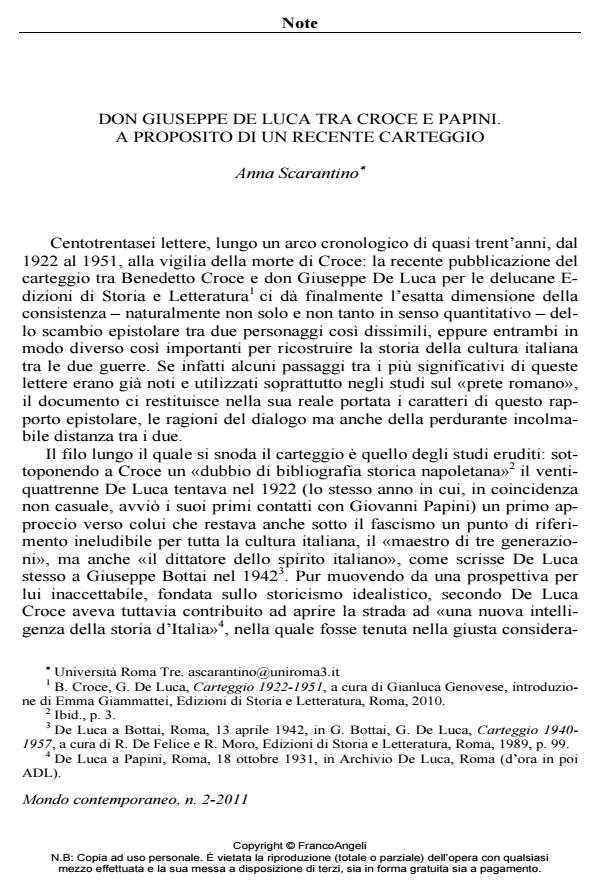Father Giuseppe De Luca Between Croce and Papini. Notes on the Recent Publication of a Correspondence
Journal title MONDO CONTEMPORANEO
Author/s Anna Scarantino
Publishing Year 2011 Issue 2011/2
Language Italian Pages 12 P. 109-120 File size 265 KB
DOI 10.3280/MON2011-002004
DOI is like a bar code for intellectual property: to have more infomation
click here
Below, you can see the article first page
If you want to buy this article in PDF format, you can do it, following the instructions to buy download credits

FrancoAngeli is member of Publishers International Linking Association, Inc (PILA), a not-for-profit association which run the CrossRef service enabling links to and from online scholarly content.
The recent publication by Edizioni di Storia e Letteratura of the correspondence between Father Giuseppe De Luca and the philosopher Benedetto Croce has contributed significantly to the historical appraisal of the relationship between secular and catholic circles in Italy from the ‘20s to the ‘40s. The main thread lies in the views of the «roman priest», that can be fully understood by making reference not only to his writings but also to the parallel correspondence entertained for about thirty years with author Giovanni Papini. Thus the reasons emerge why De Luca could consider as complementary two figures in the Italian culture of the time that were otherwise incompatible and deeply opposed to one another. Not only did De Luca admire both but he aimed at the twin goals of emulating Croce’s cultural action in order to raise the standards of religious studies and launching a constructive dialogue between catholic and secular cultures. The correspondence shows however how difficult such a dialogue would be, even when limited to scholarly studies.
Keywords: Giuseppe De Luca, Benedetto Croce, Giovanni Papini, correspondence Croce Papini, correspondence De Luca Papini, secular and catholic culture
Anna Scarantino, Don Giuseppe De Luca tra Croce e Papini. A proposito di un recente carteggio in "MONDO CONTEMPORANEO" 2/2011, pp 109-120, DOI: 10.3280/MON2011-002004